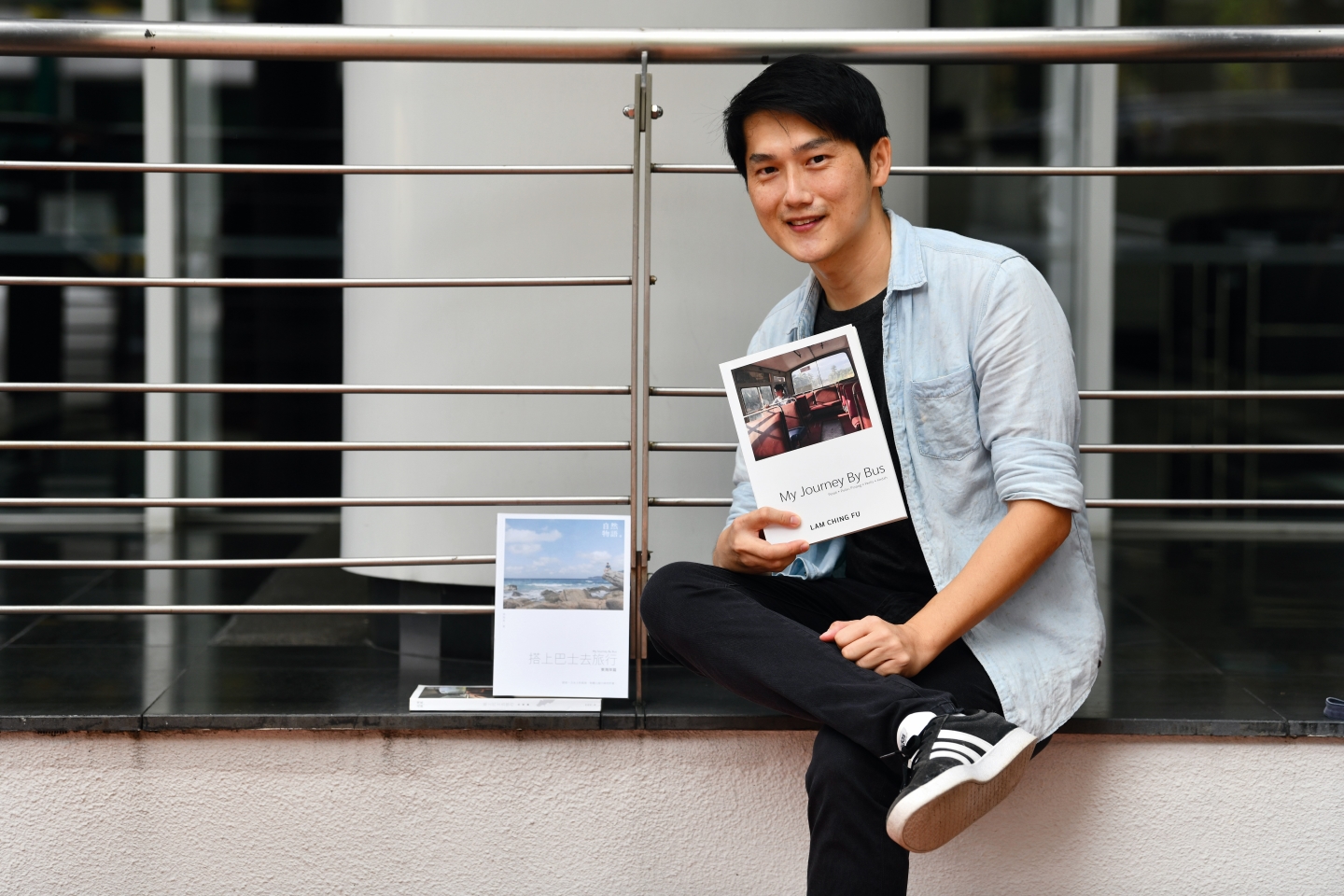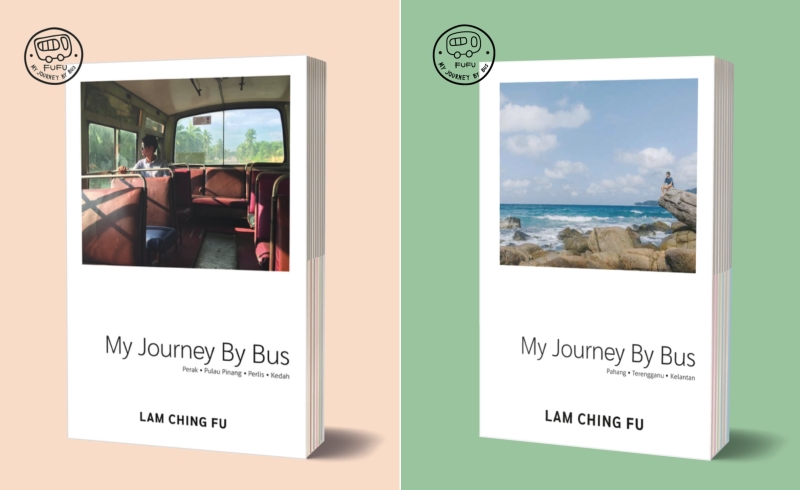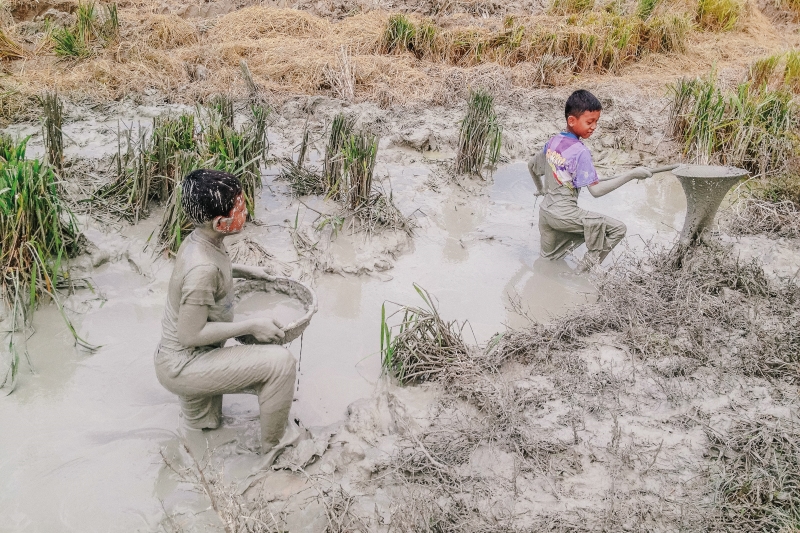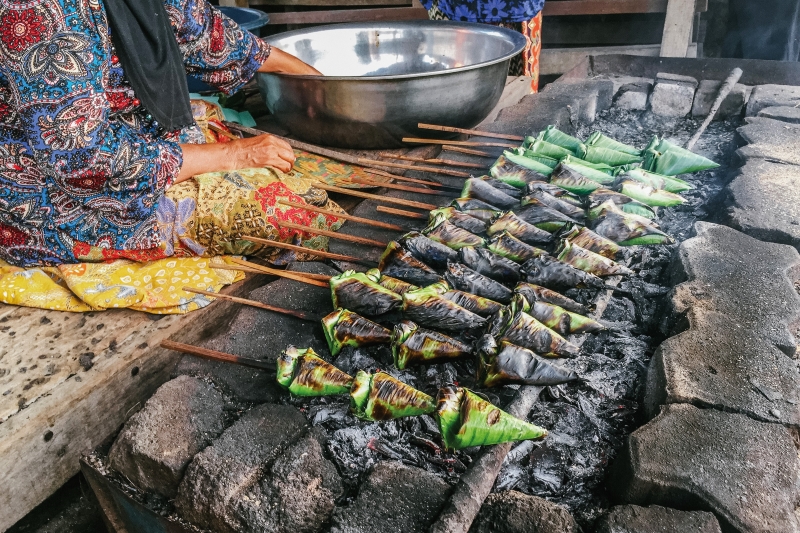
Tanjong Malim-born Lam is also working on translations of My Journey By Bus in Japanese and Bahasa Malaysia (Photo: Shahrin Yahya/ The Edge Malaysia)
When was the last time you travelled by bus? If you cannot remember or have never been on one, hop on board with Lam Ching Fu, who spent seven-and-a-half months exploring the country in these vehicles. Follow his lead and you are bound to discover places bypassed by highways and meet people you would probably just zoom by while cruising in a car.
Lam is the author of My Journey By Bus, a series of books he hopes will encourage readers to ditch their wheels for public transport, the better to see Malaysia afresh from an “elevated” bus-seat perspective.
His first book, covering 35 stops in Perak, Penang, Kedah and Perlis, was released in Chinese in 2017, followed by the English edition two years later. Part 2, charting his route from Pahang to Terengganu and Kelantan, was published in Chinese three years ago. The English version hit the shelves early this month.
Both are more than just travelogues by the 42-year-old who, after years of visiting places abroad, realised he barely knew his own backyard: He had left for further studies in Japan after Form Six. So he set off for the different Malaysian states via public transport and to check out the bus system en route.
my_journey_by_bus.jpg

Lam’s interest in towns and transport is both personal and professional. He did civil and environmental engineering at Hiroshima University and urban planning for his master’s degree, first at Frankfurt University of Applied Sciences, then as part of an exchange programme in Brazil, where he did his thesis on its bus rapid transit system. He also visited Peru, Ecuador and Colombia, where buses are an integral part of the countries’ transport network. The BRT is cheaper to implement and it saves a lot of time and money, he explains.
After a decade abroad, Lam returned home and worked with a company involved in evaluating the MRT Kajang line. His reaction to what he saw of public transport was dismay. “How are you going to persuade people to use it if the points are not properly connected, at least the last mile? Once people start using private vehicles, they will not switch back to buses or the mass rapid transit.”
After two years, he found himself at a crossroads: pursue his PhD or his fondness for travel. The call of open roads and a free-and-easy itinerary won, and Lam set off in December 2015, spending up to two months in groups of states.
Tanjong Malim-born Lam is working on translations of My Journey By Bus in Japanese and Bahasa Malaysia. Meanwhile, he is also writing Part 3, which will take readers around Negeri Sembilan, Melaka and Johor. He plans to cover Kuala Lumpur and Selangor after that and, subsequently, Sabah and Sarawak.
He goes the distance, weaving in history, story, geography, socio-economy and even chemistry between the pages. Every destination is rich with information, from transport company to terminal locations, schedules, fares, travel time and even a map of the route and attractions along the way. He also highlights what is unique about a city, town or village to show that “our bus system is good and we can travel by bus to all these places”.
img_5214-2.jpg

On the road, everyday objects that often go unnoticed, such as wood carvings adorning doors and walls in Malay homes and traditional window grilles, catch his eye. The latter are beautiful but people often throw them away when renovating their houses. “Don’t! They’re our heritage, precious and should be preserved,” he exhorts.
Behind intricate grilles with star motifs lies an old match factory and Lam saunters in. Struck by what he finds, he explains how safety matches are made, with graphics depicting the process. Photos capture the way villagers live, work and play, the lay of the land, buildings, landmarks, open fields and rainforests, accessible after one alights from the bus.
Must-try dishes lead him down byways where he meets kind vendors who gladly treat him to a meal and locals who fill him in on ingredients and the significance of beleda kering (diamond candy that sparkles like colourful gems), different types of nasi and how they are served, the best way to eat roti paung (straight from the oven) and where to get Hainanese rice at various stops.
Lam tries squid jigging and watches children catch ikan puyu in the mud. He walks, cycles and takes boat rides to reach off-beaten tracks that lead to scenic vistas of ridges and the sea. He hikes up hills and is invited into homes, including one where a villager who started picking up bottle shards to keep the beach safe has accumulated so many that his Rumah Botol now houses a lesson on marine garbage.
Pak Ali brings out a bottle he picked up that contains letters, written in Chinese. Lam reads one for him, amazed to encounter what he thought only happened in the movies!
img_0612.jpg

Travelling light, he would check into a rumah tumpangan if the plan is to stay overnight. Most are safe and clean, he says, and the rates are cheap. And the Ah Pek owner, often doubling-up as security guard, will not fail to remind male guests not to bring ladies back in the night. In remote areas where there are no such lodgings, he would have to carefully time his trip in order to catch the last bus back.
“I love travelling and seeing how people plan a city. I want people to travel by bus. You can do it as a family; the kids will love it,” Lam says. “Our buses are comfortable and punctual.” In fact, he missed several by mere minutes. When that happens, it’s all taken in good stride. Just wait an hour or so for the next one.
Taiping gets his vote for being the best-planned town in Malaysia, with its bus station in the centre, surrounded by shoplots, the museum, Lake Gardens and hills.
Lam has had exhibitions of photographs, charts, maps and merchandise inspired by things he experienced in the northern states. He will hold another, covering the East Coast as well. My Journey By Bus will run from Nov 17 to 26 at Penang’s COEX@Kilang Besi, Hin Bus Depot, George Town.
He says he had no choice but to take buses to travel after quitting his job, as he did not own a car or have the stamina to cycle. And, our train services were not comprehensive enough. After setting out, Lam soon fell in step with his training — his university research, after all, was on transport, travel time and expenditure.
Taking roads hardly travelled and writing and publishing books on his journey has not been easy, “But it’s okay. Hopefully, people can understand our bus system better and see and appreciate the beauty of the country.” As he says at the end of his first book, “A bus ticket gets you places. An open heart gets you hidden Malaysian experiences.”
Purchase a copy of 'My Journey By Bus' here.
This article first appeared on Oct 23, 2023 in The Edge Malaysia.


